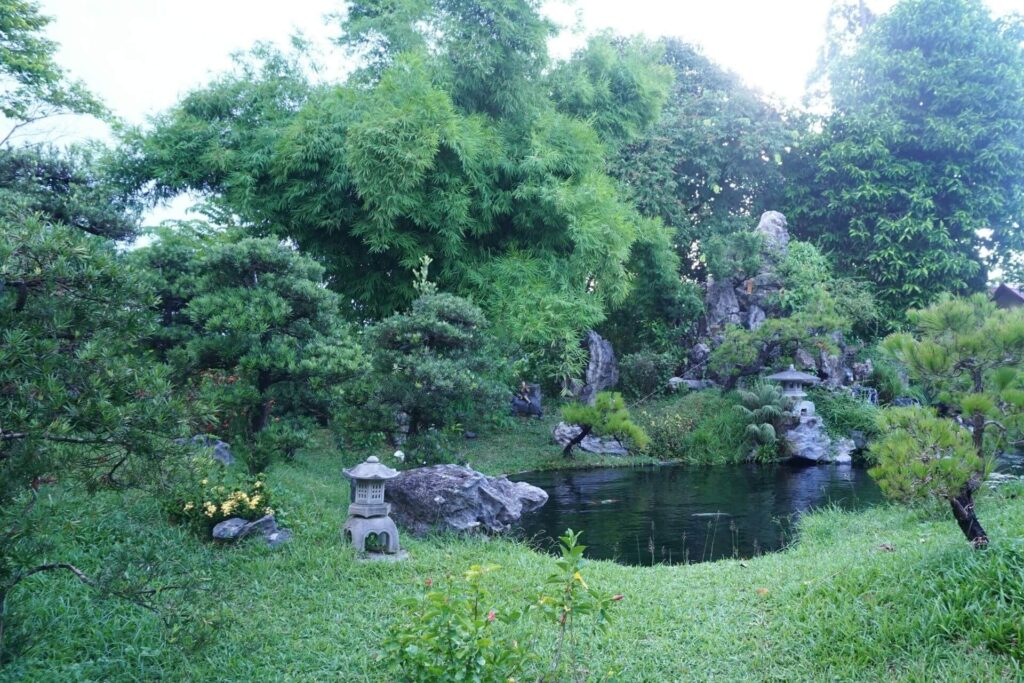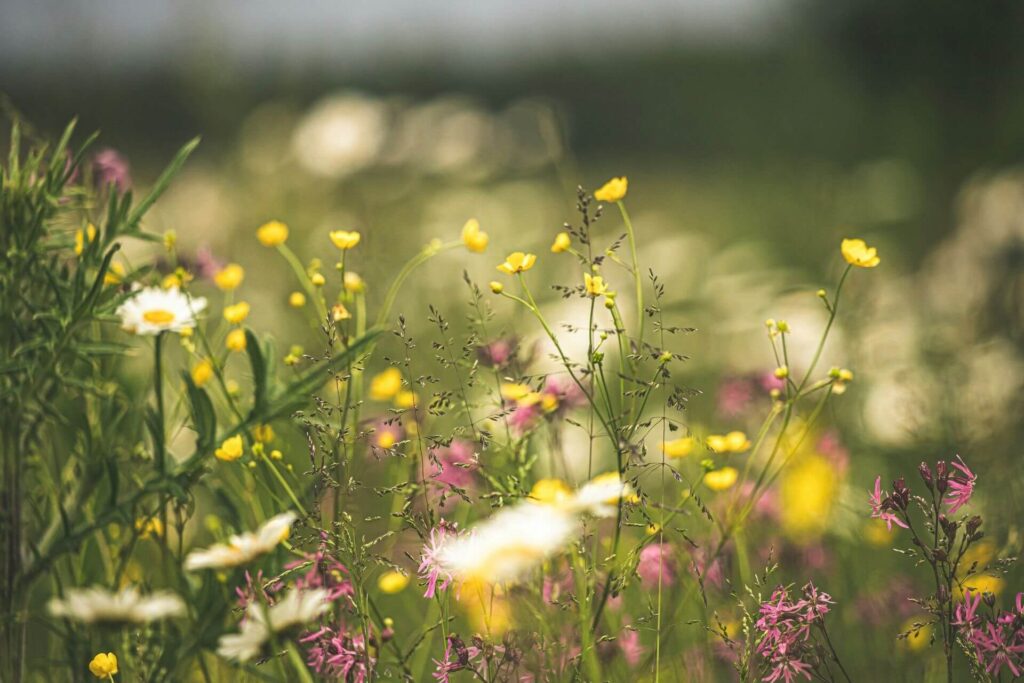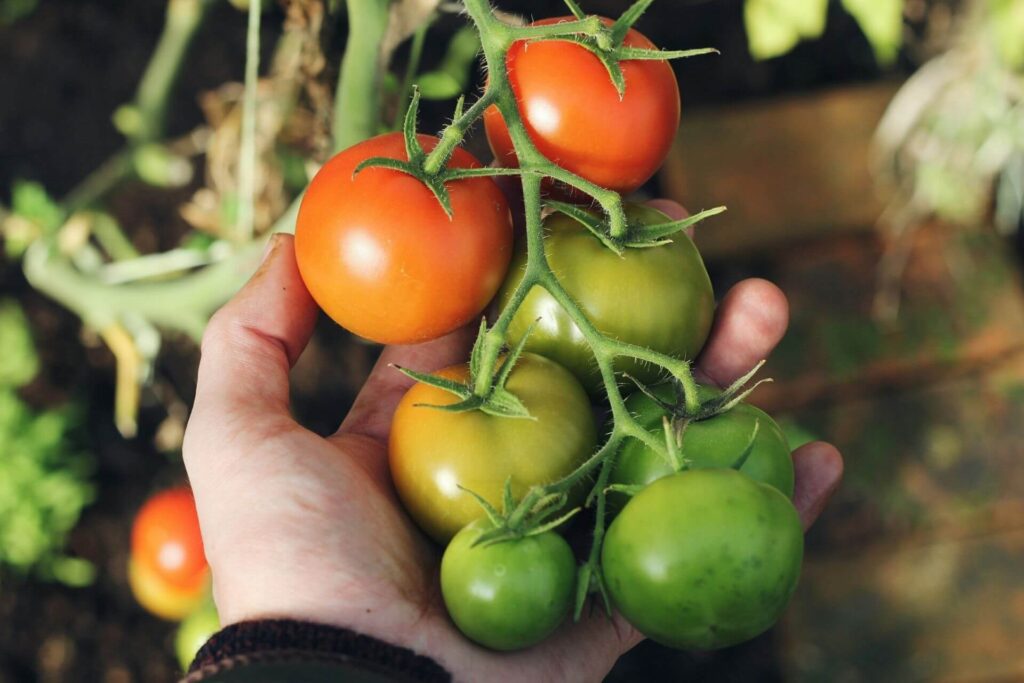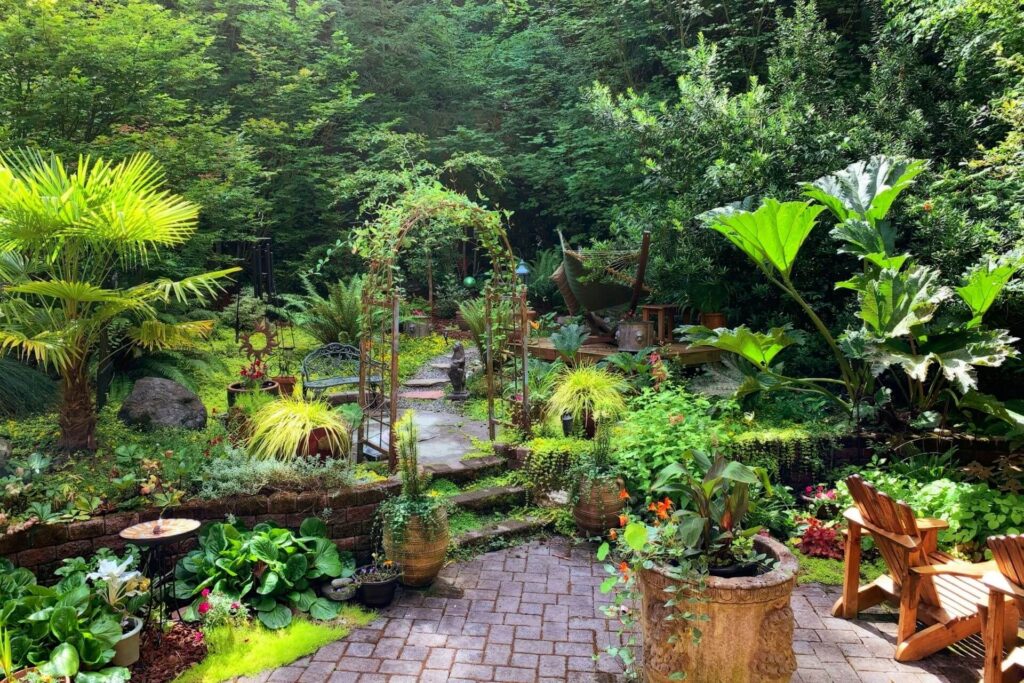New landscaping trends emerge yearly, marrying functionality and design to create comfortable outdoor spaces. In 2025, avid gardeners and landscape enthusiasts will discover that sustainability is at the forefront of these environments, promising innovative and eco-friendly solutions, unique hardscaping and a nutritious food source that seamlessly blends into the natural world.
Elevate the outdoor experience with a garden design that takes every inch of space to the next level of beauty and conservation.
Top Sustainable Landscaping Trends to Embrace This Year

After a long, cold winter, you’ll be eager to slip on your gardening shoes and get your hands dirty. This year is all about embracing sustainable garden design trends, from planting native flowers to rewilding pristine turf for new wildlife habitats. Here are five ideas for a thriving landscape in 2025.
1. Rewilding
Many people are rewilding landscapes to restore and revive ecosystems and support biodiversity. You can regenerate the natural environment by mimicking nature’s innate processes, improving soil health and building self-regulating, resilient habitats. These efforts contribute to conservation, help native species flourish and are even conducive to creating a wildlife-friendly garden in urban areas.
Rewilding has proven successful in increasing biodiversity in widespread areas. According to one study, passive rewilding reintroduced Przewalski’s horses, European bison, wolves, moose deer and boar over 30 years at the Chornobyl Exclusion Zone. In Sweden, scientists boosted species richness and pollinator activity over three years through rewilding experimentation.
Converting land to lawns has been particularly detrimental to biodiversity, leading to calls to undo harmful human interferences. In 2021, researchers discovered a 3.6 times higher rate of plant species richness and 3.7 times higher insect species richness in a wild meadow versus a conventional lawn. The results signify that a rewilded meadow is a healthier and more diverse ecosystem for flora and fauna.

2. Cut Flower Borders
Is there anything more beautiful than a splash of color in your garden? Cut flower borders deliver an array of textures and fragrances in a sea of pink, red, yellow, blue and green. You can consider many cut flower border ideas for your outdoor space, including the following:
- Grouping flowers by color or plant species
- Planting different flower shapes and textures for depth
- Layering flowered plants by height, starting with the lowest in the front and the tallest at the center of a bed
- Incorporating dense green foliage to complement colorful blooms
- Adding seasonal blooms for year-round appeal
- Creating themed flower borders resembling a cottage garden or wildflower meadow
- Integrating decorative structures like trellises and containers
- Using hardscape materials like stone and brick to border flower beds
The best plants for cut flower borders should comprise annuals, perennials and blossoming shrubs, such as zinnias, dahlias, roses and sunflowers.
3. Edimental Gardening
With the cost of groceries rising and people growing more concerned about food safety, edimental gardening will likely become one of the most common landscaping trends in 2025. Incorporating edible plants into traditional garden designs is also straightforward. Simply blend them among ornamental plants or separate them from the rest of the landscape in raised beds and containers.
The top edimentals to grow for culinary and aesthetic appeal include:
- Lavender: Use these fragrant, purple blooms in cooking, teas and soaps.
- Rosemary: This common culinary herb has a peppery taste.
- Salad greens: These cool-weather plants require just 1 inch of water weekly for easy maintenance.
- Violas: You can use these edible flowers as garnishes.
- Lemon balm: This fragrant herb is perfect for teas, cocktails and desserts.
- Lemongrass: Use this citrus-flavored grassy foliage in cooking and tea.
Add these edimentals around produce crops, nut plants and fruit trees for a visually stunning landscape and to enhance your favorite culinary creations.

4. Innovative Irrigation Solutions
Choosing the right irrigation system for your landscape is one of the most sustainable practices for modern gardens. For example, smart irrigation tools use cutting-edge technology to water plants based on weather patterns, soil moisture and growing requirements. Often, these systems come with smart sensors and automation for greater watering precision.
However, drip irrigation is equally effective for conserving water and ensuring plants thrive. Drip irrigation distributes water straight to the root, avoiding runoff and evaporation. A study from China showed a 90% efficiency rate in water uptake by plants, boosting crop yields for watermelon, wheat, potato, maize, onion and more.
When selecting the most innovative irrigation solutions for your landscape in 2025, consider the climate, plant species, soil type and water availability. You’ll want to find a mechanism to tailor your landscaping needs and meet your sustainability objectives.
5. Hardscaping
If you want to do more with your surroundings than install flower beds, hardscaping can improve functionality. This approach comprises nonliving features within a landscape design and may include patios, decks, fencing, pergolas, stone pathways and other structures. It often complements softscaping beautifully, diminishing the need for extensive maintenance, creating an elegant outdoor environment and increasing property values.
Entertain outside with an outdoor kitchen or fireplace for cooking and gathering, or define specific areas with retaining walls and tiered gardens. You might even include fountains, bird baths and waterfalls for trickling water sounds.
Also, lean into natural, recycled and permeable materials as eco-friendly hardscaping options. Permeable pavers like gravel and flagstone make stunning walking paths and allow water to penetrate the ground. Recycled items like reclaimed wood and reusable glass mulch are other possibilities to reduce waste.

Popular Garden Features for Enhancing Curb Appeal in 2025
Embracing this year’s landscaping trends can vastly improve curb appeal, whether you’re impressing passersby or are interested in selling your property.
According to a 2023 National Association of Realtors (NAR) report, 97% of NAR members think curb appeal is important to attracting potential buyers. About 92% recommend sellers spruce up their outdoor area before listing their home.
The following features can completely transform your landscape’s appeal in 2025:
- Vertical gardens along fences or house siding
- Outdoor lighting, including string lights, walkway lights, spotlights and decorative solar lights in garden beds
- Pollinator plants and butterfly gardens
- Native and drought-tolerant plants for eco-conscious buyers looking for sustainable properties
- Sculptures and other unique outdoor art installations for memorable characteristics
Create the Ultimate Outdoor Space With 2025’s Best Landscaping Trends
The year’s emerging landscaping trends can change the overall aesthetic of your outdoor area, helping you attain greater sustainability and integrate a unique garden design that stands out. Determine your landscape goals and plan your layout for a stunning space.

Leave a Reply